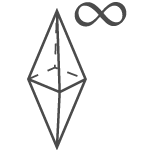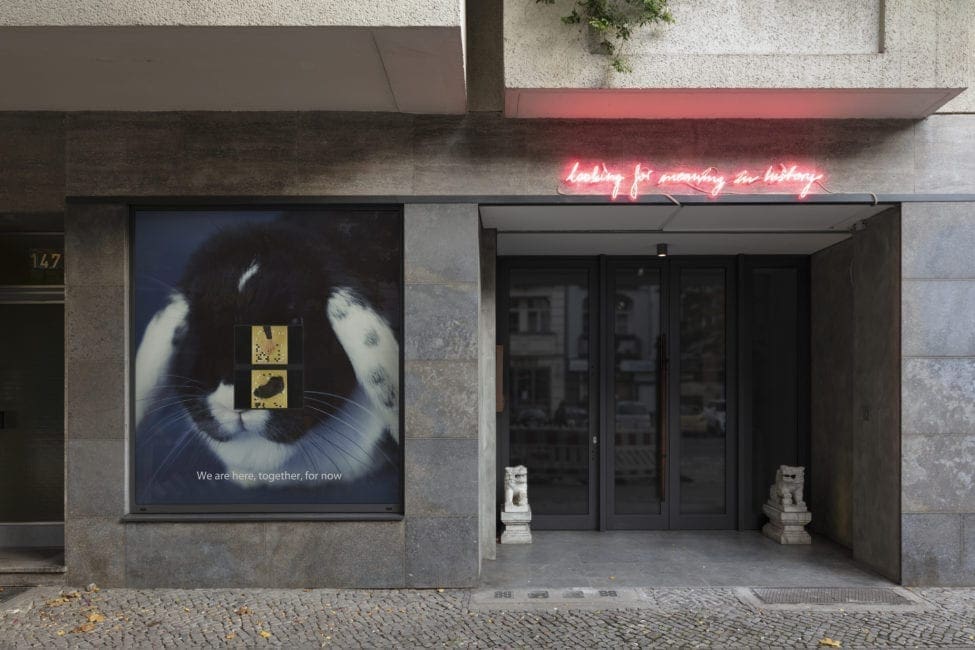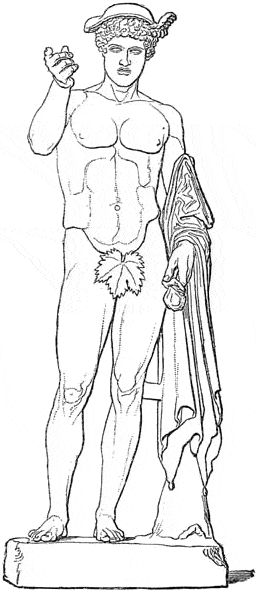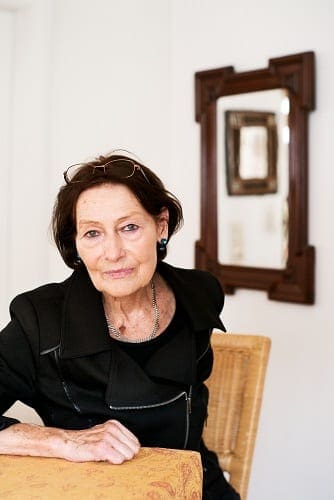THE TRANSPORT OF THE SPHINX [ANTRANSPORT DER SPHINX]
Thoughts on the work cycles ‘Josephine’ and ‘Reading history’
“What a piece of work is a man, how noble in reason, how infinite in faculties, in form and moving how express and admirable, in action how like an angel, in apprehension how like a god! the beauty of the world, the paragon of animals”
Shakespeare
As if Dadaism had gained wings and
sailed across the rift of nihilism
This text accompanies the exhibition Josephine, entering the maze. This show is the twin of Nachricht vom letzten Menschen [Message from the Last man], the previous installation of Michal Martychowiec. It is the fourth in the current exhibition cycle Mythopoesis.
It is not easy for me to write about Josephine because language binds and Josephine is something living. In her, we experience the eternally recurring transport of the sphinx. A sphinx in this case is understood as a question that can neither be obtained nor fathomed.
The artist titled this installation Josephine, entering the maze. I understand this title both as a description of an activity as well as an invitation to us: come with us into the labyrinth, follow me into the depths. At least that’s what the rabbit says to Alice-Neo in the tale by Lewis Carroll and the Matrix film by the Wachowskis.

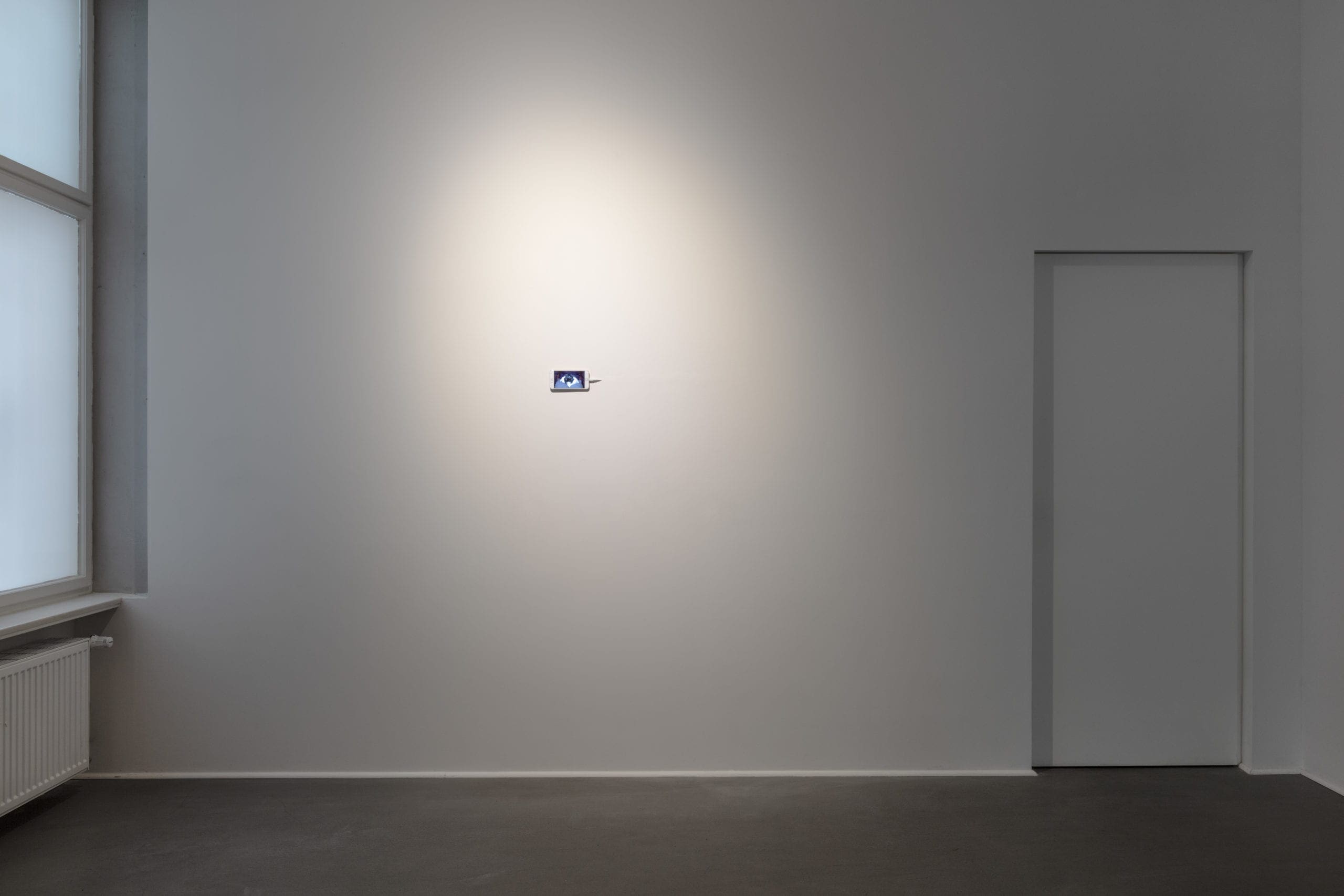
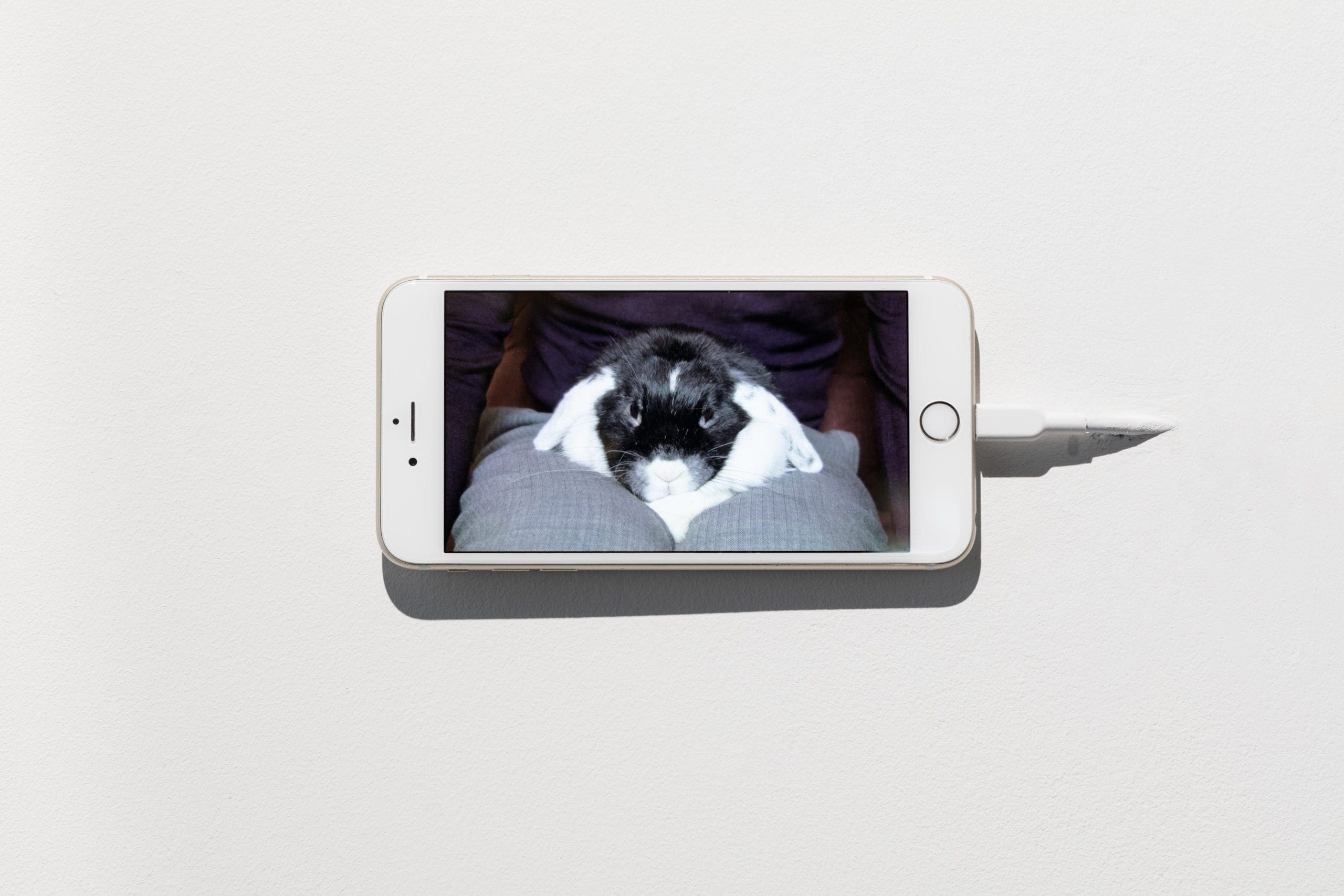
Inside Josephine
A gentle but insistent whisper, a loving blandishment fills the room with intimacy. Josephine l’histoire se passe aujourd’hui. Josephine, history is happening today. Through the teahouse Jian, past a large, square work from the Reading history series, we enter the dark Thesaurós. In a sacral staging in the center of which we find a smartphone. On it runs a video of the entity raised to the status of an ‘unknown icon’: Josephine, on the artist’s lap, filmed frontally, nostrils bared. It is the visual level of the installation Josephine, history is happening today. With a soft voice Martychowiec speaks to his rabbit. Perhaps he speaks to it in order to alleviate our wound, which the loss of the ability to locate ourselves within history?
A performance of the double headed entity: Martychowiec – Josephine.
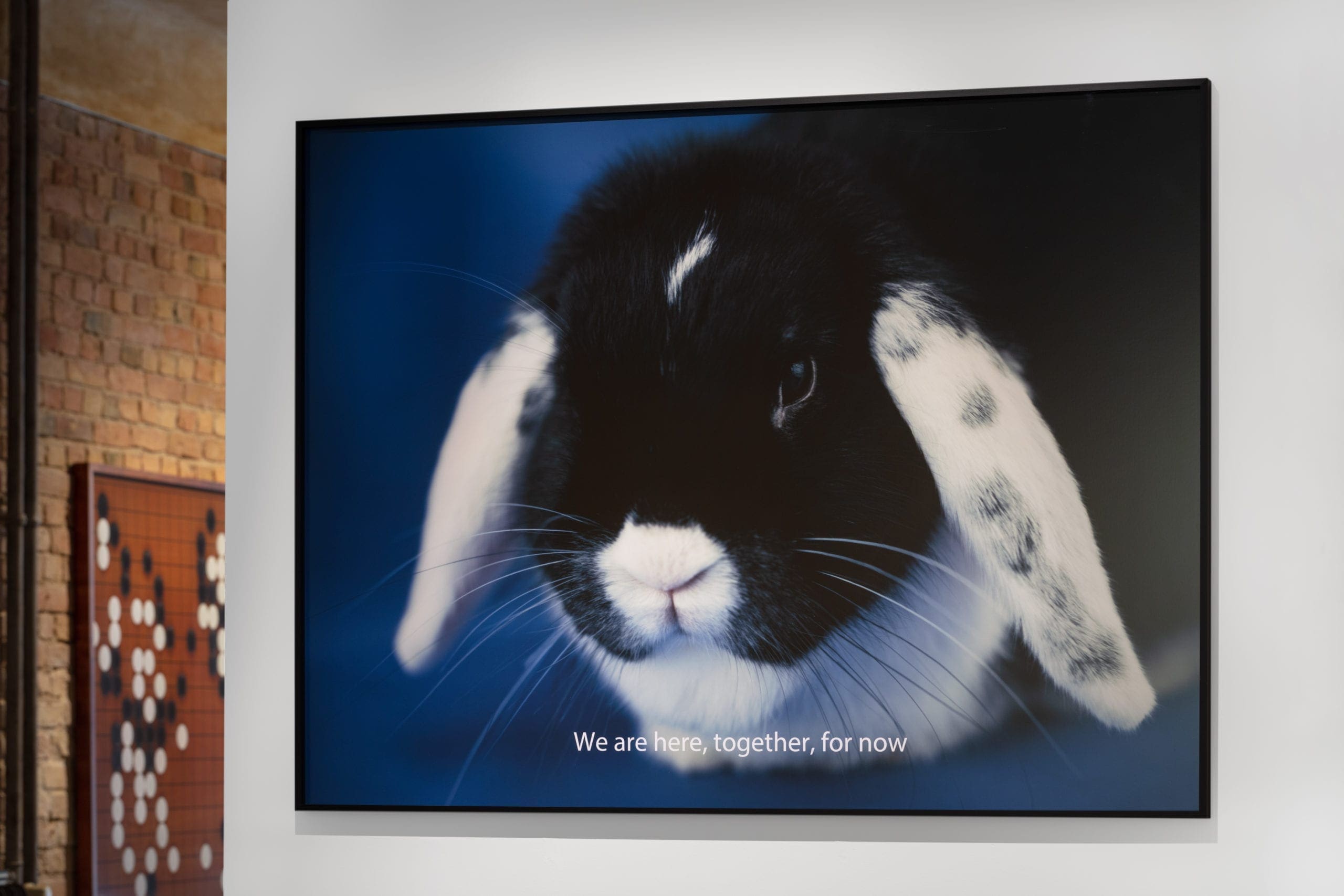
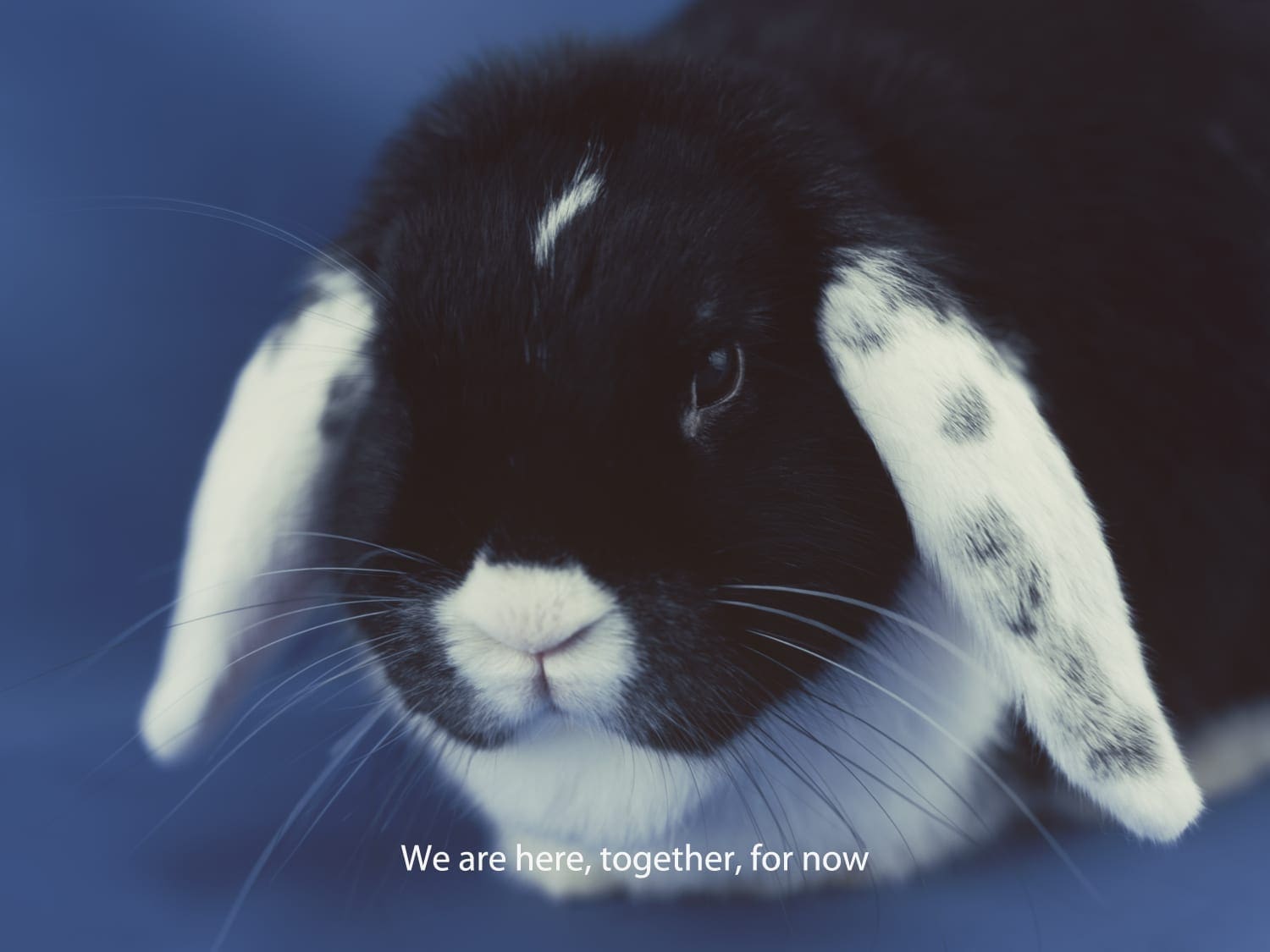
If we turn on our own axis, we notice that we are standing between two portraits of the same animal. In the above-mentioned video and in a large, bluish photograph, the creature looks at us and yet looks right through us at itself. Not without melancholy, the artist choose to write ‘a truth’ beneath the iconic image: We are here, together, for now.
“What is the significance of this then?”, the artist asks, “Josephine stares still from the screens. State of being alive, and state of being art. And state of death and the sphere of history.”
Thus, the artist has built Josephine yet another small shrine inside the Thesaurós – which itself translates to ‘treasure house’. Josephine is here; the window on Uhlandstrasse is also adorned with her cut-up portrait.
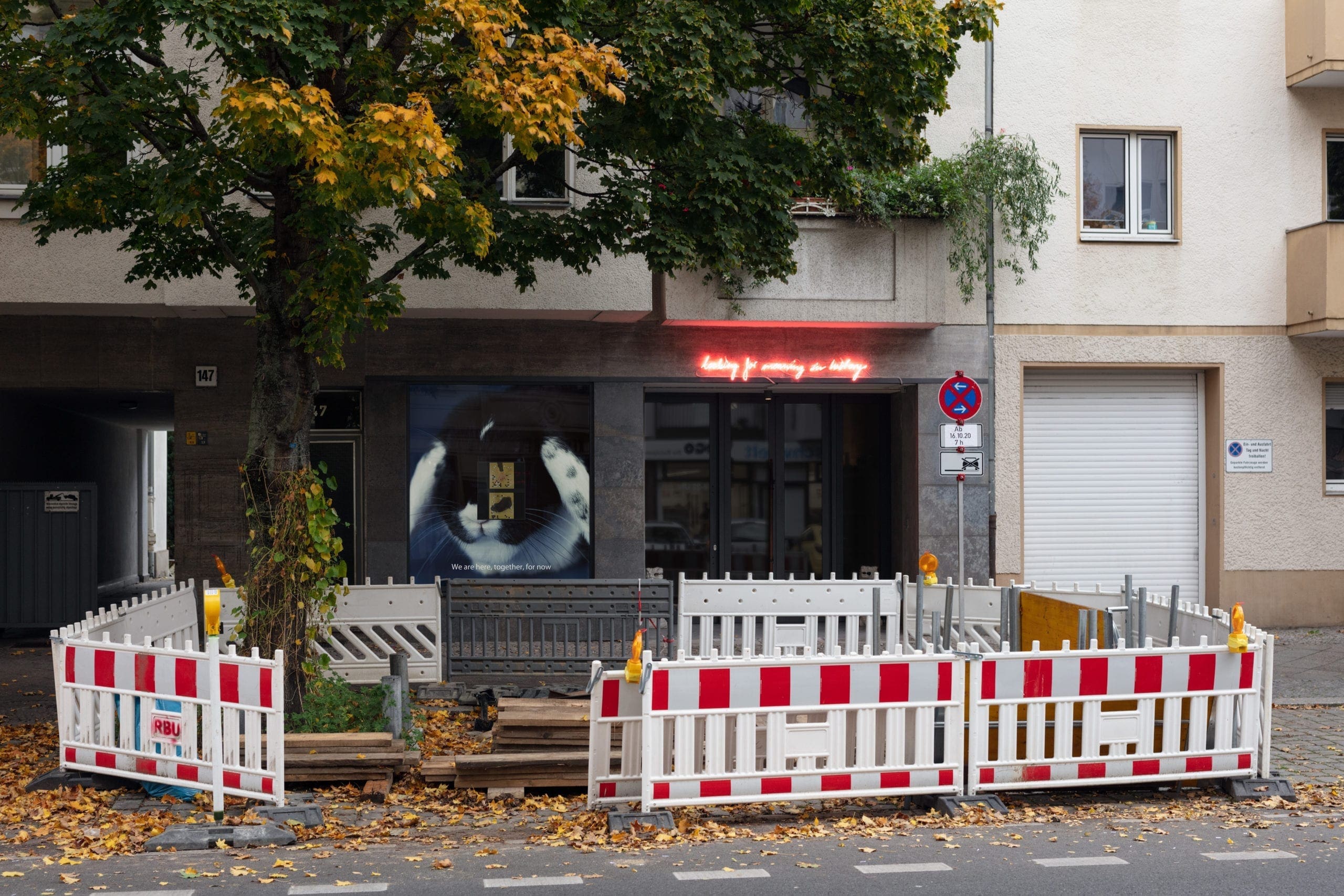

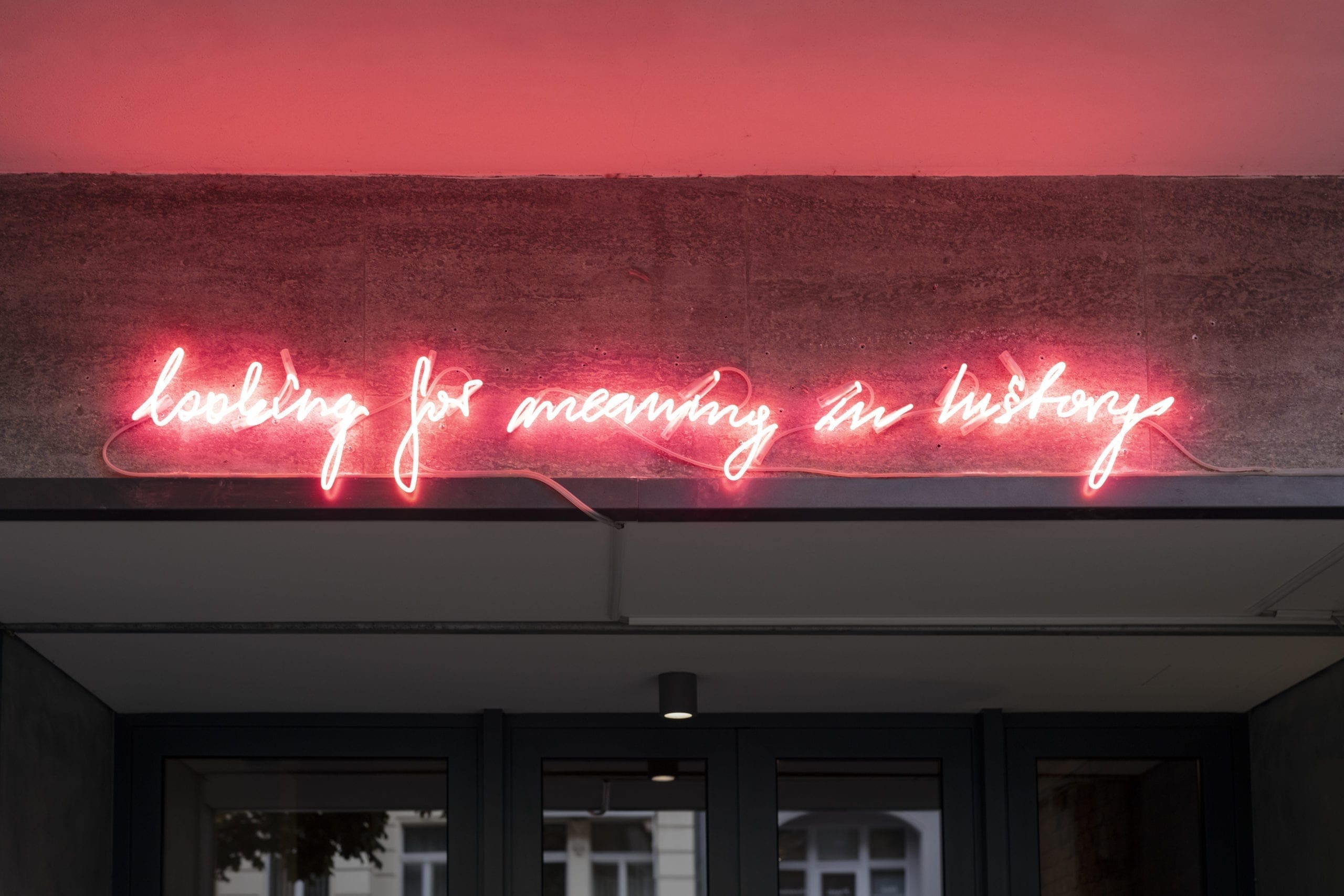
In front of the portal: Reading history
Looking for meaning in history. To be aware of one’s own historicity, contingency and historical construction. To become aware of one’s own becoming. Not to let the overload of signs and images be a postmodern cudgel, not to become metaphysically homeless or even cynical; this is how I would characterize the core concerns of Martychowiec’s art. To this end, he is constantly looking for metaphors that are conceptually and symbolically reflecting these values.
In the shop window a big sticker of Josephine, in which two screens are embedded. They show two videos with an identical plot and a vivid difference. The artist is reconstructing a game between the two Go masters Huang Jinxian and Chen Zude that was documented in May, 1966, a few days before the start of the Chinese Cultural Revolution. But on one board sits our sweet Josephine and ‘disturbs the course of history’. She pushes down stones, she moves, unpredictable, superhuman, annoying, monumental.


The game of Go and the manifold qualities that are already symbolically embedded in the object play an pivotal role in the cosmos of Martychowiec. In his language, Go stands as a metaphor for history, indeed causality per se. It is important to note that Go is not only the most complex – in terms of the possible moves – but also by far the longest documented game in the world. Since 193 AD, complete games between princes, kings and grandmasters have been recorded. The most convincing and most important embedded quality, however, is that once a stone has been placed, it must not be moved. That is, every move, every act influences the next, the causal wheels necessarily mesh and drive time forward. Time again is deposited, layer by layer.
Materials and texts on the exhibition
Here you will find an introduction to the exhibition cycle mythopoesis.
Download introduction
Here you can find the floor plan of the exhibition.
Download floor plan
Here is the gallery and mediation platform Bublitz Objects. On this platform you can find detailed information about all works of art in the exhibition and purchase ones that are still available.
Visit Bublitz Objects
Photos © Stefan Hähnel
